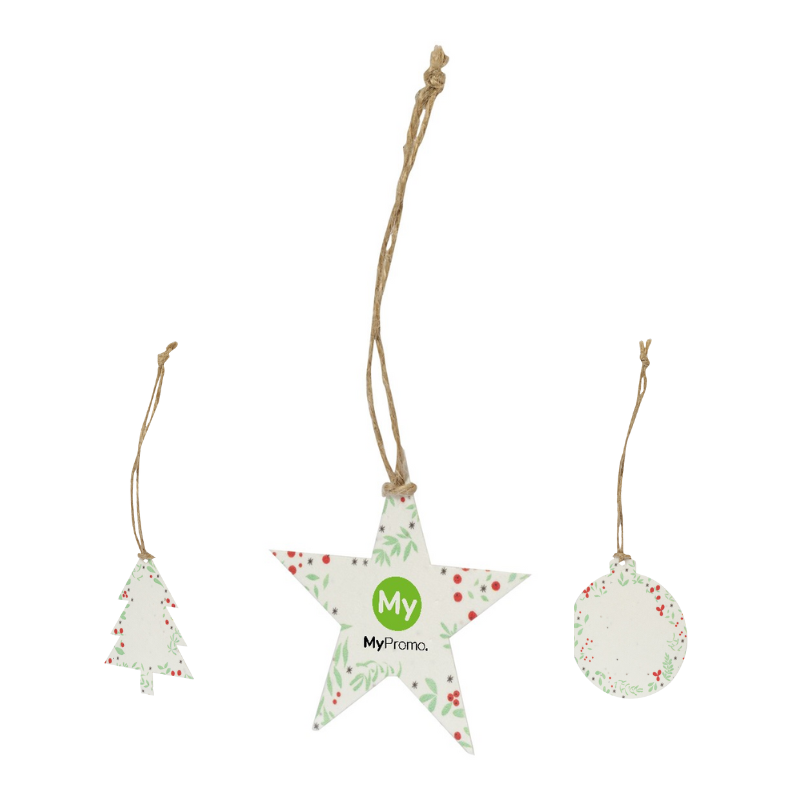Seed paper
What is Seed Paper?
Seed paper is an eco-friendly, biodegradable material embedded with seeds that can grow into plants when the paper is planted in soil. Its importance in manufacturing and promotional gifts lies in its sustainability and innovative approach to reducing waste. By incorporating seeds into the paper, it transforms an ordinary product into something that can contribute positively to the environment.
Seed paper has a rich history dating back centuries. It originated as handmade paper embedded with seeds by ancient cultures, which used it for ceremonial and practical purposes. In modern times, it has gained popularity as an environmentally conscious alternative to traditional paper, especially in the context of corporate gifts, marketing materials, and special event invitations.
The process of producing seed paper begins with sourcing post-consumer or recycled paper. This paper is then pulped and mixed with water to create a slurry. Seeds are carefully selected and added to the slurry, ensuring they remain intact and viable. The mixture is then spread out on a screen to form sheets, pressed to remove excess water, and dried. This simple process results in a versatile and sustainable product that can be printed on, cut into shapes, and used in various applications.
Characteristics of Seed Paper
Seed paper possesses several notable properties and characteristics. It is biodegradable, meaning it will decompose naturally without leaving harmful residues. The embedded seeds are often a mix of wildflowers, herbs, or vegetables, chosen for their ease of growth and environmental benefits. The paper is typically thick and textured, giving it a unique, rustic appearance that enhances its appeal.
Common Applications of Seed Paper
Seed paper is used in a variety of applications, particularly in the promotional and gift sectors. It is popular for making business cards, wedding invitations, greeting cards, bookmarks, and tags. For example, companies use seed paper for eco-friendly business cards that recipients can plant to grow flowers or herbs. Wedding invitations made from seed paper add a memorable and sustainable touch to special events. Greeting cards and bookmarks made from seed paper are not only beautiful but also provide the recipient with the gift of a plant.
Promotional products often utilize seed paper for branded giveaways, such as bookmarks and tags that can be customized with company logos and messages. These items not only promote the brand but also demonstrate a commitment to sustainability.
Advantages of Using Seed Paper in Manufacturing
Seed paper offers several advantages over traditional materials. It reduces waste by providing a second life to the product, as it decomposes and grows into plants rather than ending up in a landfill. The use of recycled paper in its production further minimizes environmental impact. Additionally, seed paper products often carry a positive message about environmental responsibility, enhancing brand image and customer perception.
Compared to other materials, seed paper stands out due to its unique ability to grow plants. Traditional paper and plastic items do not offer this benefit and often contribute to environmental pollution. However, seed paper does come with some challenges. It requires careful handling to avoid damaging the seeds, and the quality of printing may be slightly different due to its textured surface.
Potential Challenges and Limitations
While seed paper is a fantastic sustainable option, there are a few challenges to consider. The embedded seeds need to remain intact and viable, which means the paper must be handled and stored properly. The printing process on seed paper may require special techniques to ensure high-quality results without damaging the seeds. Additionally, the growth of the seeds depends on proper planting and care, which may not always be guaranteed by the end user.
Comparison Table: Seed Paper vs. Traditional Paper vs. Recycled Paper.
|
Aspect |
Seed Paper |
Traditional Paper |
Recycled Paper |
|
Characteristics |
Embedded with seeds, biodegradable, textured |
Smooth, various weights and finishes, non-biodegradable |
Made from post-consumer waste, varies in quality |
|
Environmental Impact |
Eco-friendly, reduces waste, promotes plant growth |
High environmental impact, deforestation, pollution |
Lower environmental impact, reduces landfill waste, saves resources |
|
Common Uses |
Business cards, wedding invitations, greeting cards, promotional items |
Books, office paper, packaging, printing |
Office paper, packaging, tissues, newsprint |
|
Benefits |
Reduces waste, enhances brand image, environmentally responsible |
Widely available, versatile, cost-effective |
Reduces resource consumption, supports recycling industry, lessens environmental footprint |
What is seed paper made of?
Seed paper is made from recycled paper pulp that is embedded with various types of seeds, such as wildflowers, herbs, or vegetables.
How do you plant seed paper?
To plant seed paper, moisten the paper, place it on soil in a sunny location, cover it with a thin layer of soil, and water it regularly until the seeds sprout.
What are the benefits of using seed paper?
Seed paper is biodegradable, reduces waste, and promotes environmental sustainability. It also adds a unique and memorable touch to promotional products and gifts.
Can seed paper be printed on?
Yes, seed paper can be printed on, but it requires special printing techniques to ensure that the seeds are not damaged and remain viable for planting.
What types of seeds are commonly used in seed paper?
Common seeds used in seed paper include wildflowers, herbs like basil and parsley, and vegetables such as lettuce and carrots. These seeds are chosen for their ease of growth and environmental benefits.


